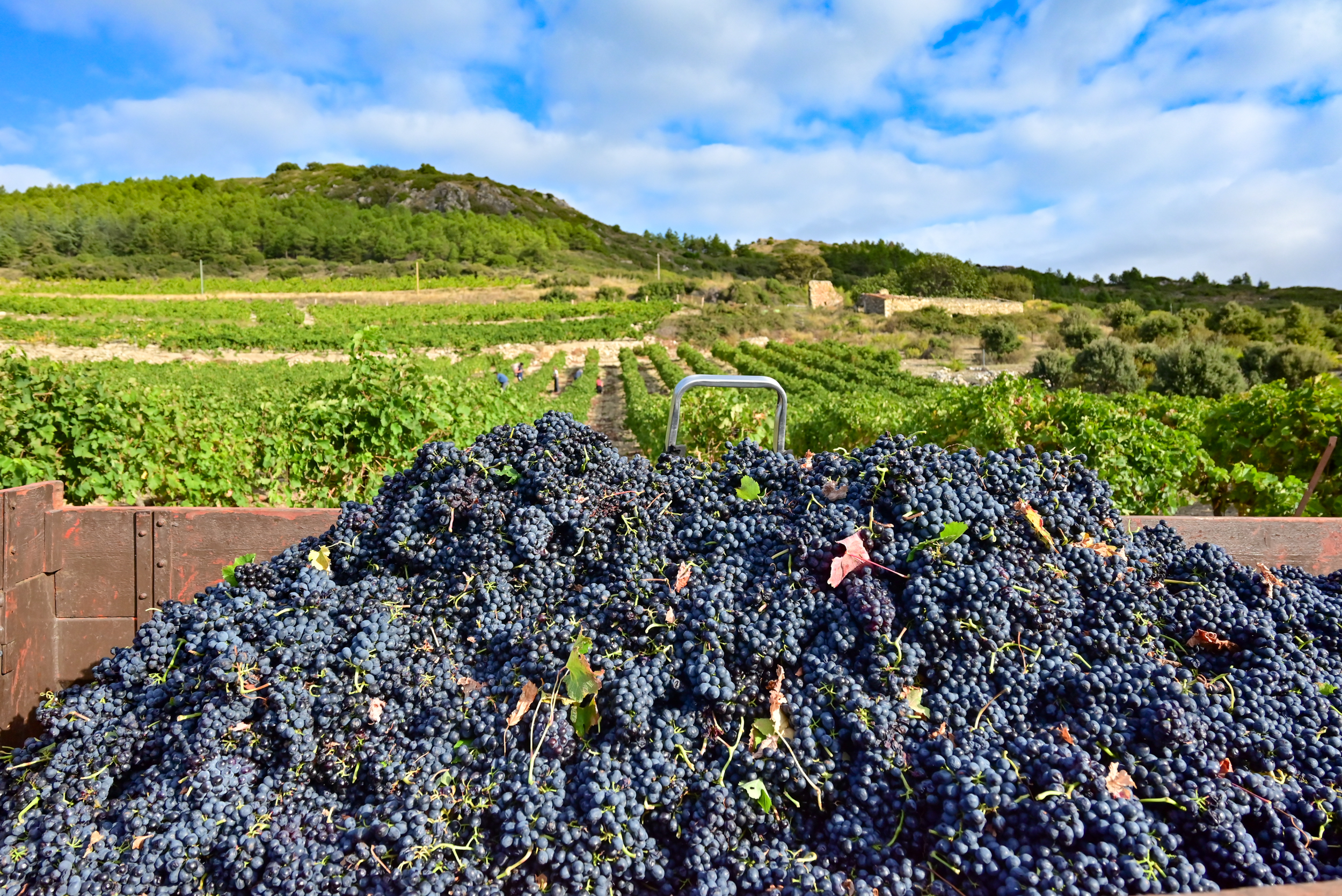The 2024 Harvest in Roussillon: low yields and very good quality
France’s harvest prediction for 2024 is that it will be 18% smaller than 2023 overall, but slightly higher than the frost-hit 2021.
With a yield estimation of around 15 to 20 Hl/ha, the general consensus is that the 2024 wine production in Roussillon will be lower than that of 2023 by about 45 % in volume. Fortunately, on all terroirs, quality will still be there, particularly for whites and rosés, but also for reds, which this year required experience and much more work to obtain the quintessence of the berries.
On 31 July 2024, the harvesting of Muscat à petits grains began in Roussillon (earlier than the previous years’ August start). It signalled the beginning of the whites’ picking season but also a period of particular vigilance for producers in general, waiting for the optimum time to pick their grapes.
In a typical year, the average yield in the Pyrenees-Orientales reaches 27 hectolitres per hectare (2,700 litres). This year, it struggled to exceed 15hl/ha across the region and was lower in some, unirrigated, areas. NB: It is worth noting that only 5% of Roussillon’s vineyard is irrigated (using drip irrigation).
Roussillon has been affected by numerous challenging climatic conditions, but more so than the rest of France, especially with drought.
Indeed, drought, caused by the lack of rainfall and dry winds, is becoming a constant worry for the region’s producers. Over the past five years, rainfall has been decreasing from 530mm in 2020, down to 250 mm in 2024 (beginning of October). The effects of the last couple of years’ droughts are still being felt and, in areas such as the Aspres, Rivesaltes and Canet-en-Roussillon, some vines simply shut down.
Some varietals have been more resistant than others to heat stress, and Carignan and Macabeu in Maury, for example, managed to do well this year. However, it is coulure there which impacted its Grenache yield. Overall, the production for Maury and the rest of the Agly Valley will be down by an estimated 40% to 50%. In the centre of the area and the Aspres terroir, the quantities will be also about the same. The vineyards of Banyuls fared better than most, because they received more rain falls (400 mm).
Spring showers had brought much-needed relief to some parts of Roussillon. However, the vineyards have struggled with the cooler spring and millerandage dealt many a heavy blow.
Where berries were full, quality will be superb for both dry and fortified sweet wines. With mixed conditions and the array of micro-terroirs to be found in Roussillon, quality levels will not be homogenous for the 2024 vintage but always of a good to a very good level. The patience and dedication of growers and winemakers will play a big part in the success of another new testing vintage.





